Dermatology

Introduction
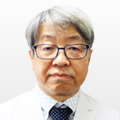
Chief Director
The Department of Dermatology provides comprehensive care for a wide range of skin and subcutaneous tissue disorders, from benign inflammatory conditions to malignant tumors such as skin cancer.Although some skin conditions are difficult to treat, recent advances in medical science—particularly the development of biologic agents and other new medications—have rapidly improved the treatment of these challenging diseases.
Our department offers accurate diagnosis and appropriate care for both common and hard-to-treat skin conditions. We provide treatments ranging from standard therapies to the latest options using newly developed drugs.The skin is often referred to as “the window to internal health,” as skin symptoms may sometimes reflect underlying systemic or internal organ diseases. In such cases, we work closely with other medical departments to offer individualized, holistic care tailored to each patient's condition.
In addition, while skin cancer was once relatively uncommon in Japan, its incidence has been rising rapidly in recent years, partly due to the aging population. Our dermatology team includes specialists with extensive knowledge and experience in skin cancer treatment. We are able to provide care that meets global standards, offering a full spectrum of treatments from surgical excision to the latest immunotherapies.
Characteristics of this department
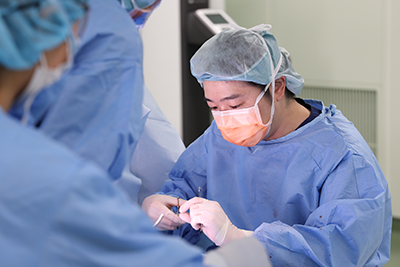
We actively treat a full spectrum of dermatologic surgical conditions—from minor procedures for benign skin tumors to complex cases such as facial skin cancers and lymph node dissection for metastatic disease, including those requiring general anesthesia and reconstructive surgery.
Our team includes board-certified specialists in dermatologic oncology and plastic surgery with extensive experience in managing skin malignancies. We accept challenging cases that are difficult to diagnose or treat, and provide advanced surgical care such as sentinel lymph node biopsy, lymph node dissection, and excision of facial skin cancers. We also accept patients with postoperative recurrences from other institutions and offer up-to-date multidisciplinary treatments for skin cancer based on the latest medical evidence.
We treat a wide range of dermatological conditions including atopic dermatitis, urticaria (hives), vitiligo, herpes zoster (shingles), and leg ulcers.
For cases of atopic dermatitis and urticaria that are resistant to standard treatments, we offer biologic therapies. We also perform steroid pulse therapy for rapidly progressing alopecia areata and vitiligo.
We provide patch testing for contact dermatitis and dental metal allergies.
Laser treatments are available for conditions such as infantile hemangiomas, port-wine stains, and nevus of Ota. For infantile hemangiomas, we also offer oral propranolol syrup therapy (Hemangiol), which is administered during hospitalization.
We diagnose and treat nail disorders such as ingrown toenails and onychogryphosis. Certain treatments (e.g., wire correction) may not be covered by insurance. We also perform nail biopsies for conditions like nail psoriasis and nail lichen planus.
We also diagnose and treat lymphedema. Our facility includes both a certified lymphedema physician and lymphedema therapists. We offer staging through lymphoscintigraphy and surgical options such as lymphaticovenous anastomosis (LVA), as well as manual lymphatic drainage therapy (non-insurance-covered service) by certified therapists.
Some dermatological conditions can be difficult to diagnose or treat. If you are unsure about your diagnosis or treatment options, we are here to support you with compassionate care. We also offer second-opinion consultations for these situations.
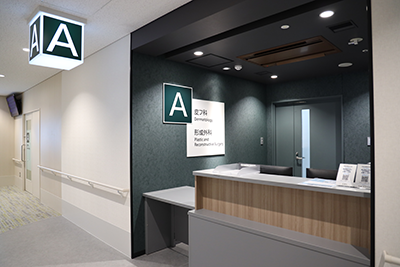
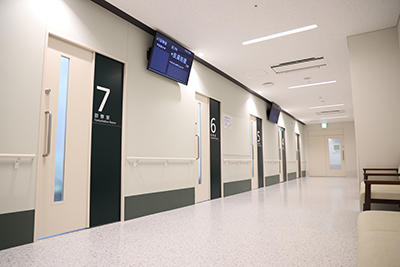
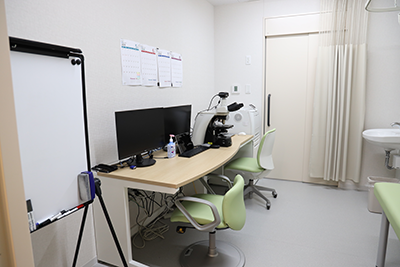
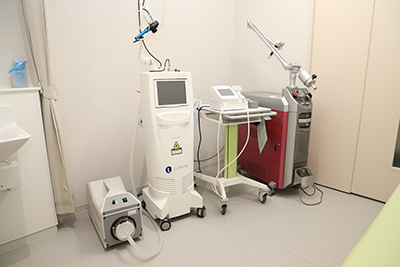
Main diseases
Skin Cancers(including melanoma, squamous cell carcinoma, basal cell carcinoma, extramammary Paget’s disease, Merkel cell carcinoma, cutaneous lymphoma, Bowen’s disease, and others)
Atopic Dermatitis, Drug Eruptions, Contact Dermatitis, soriasis, Collagen Vascular Diseases (e.g., systemic lupus erythematosus, dermatomyositis, scleroderma
Treatment
• Comprehensive Treatment of Skin Cancer(Surgical excision and reconstructive surgery, Sentinel lymph node biopsy, Lymph node dissection, Chemotherapy, Immunotherapy), Laser Treatments(Pulsed dye laser (Vbeam), Q-switched ruby laser), Oral propranolol therapy (Hemangiol syrup) for infantile hemangiomas, Machi wire technique for ingrown toenails, Lymphaticovenous anastomosis (LVA) for lymphedema, Biologic therapy for psoriasis and atopic dermatitis, Targeted phototherapy using localized ultraviolet light devices
Phototherapy in Dermatology
Ultraviolet (Excimer Light) Therapy for Skin Conditions
This treatment utilizes the immunosuppressive effects of ultraviolet (UV) light to calm skin symptoms caused by an overactive immune response. UV light is precisely applied to the affected areas to suppress inflammation and relieve symptoms.
Indications
Psoriasis, Palmoplantar pustulosis, Vitiligo, Atopic dermatitis, Alopecia areata, Parapsoriasis, Mycosis fungoides, Cutaneous lymphoma, Chronic lichenoid pityriasis
Estimated Treatment Frequency and Duration
Phototherapy is typically administered once or twice per week.Improvements often begin after approximately 10 sessions, and a total of 20 to 30 sessions is generally recommended for optimal results.
Treatment Cost
If covered by Japanese health insurance, the cost is approximately 1,000 yen per session (with a 30% copayment).
Please note that additional charges may apply for consultation and prescriptions.
- Atopic Dermatitis (Hard-to-Treat Areas) ⇒ Helps relieve itching and reduce the severity of skin rashes in areas where symptoms are persistent.
- Vitiligo Treatment ⇒ Promotes re-pigmentation of the white, depigmented areas of the skin.
- Psoriasis (Stubborn Areas) ⇒ Reduces skin thickness, redness, and itching, especially in areas resistant to conventional treatments.
- Palmoplantar Pustulosis ⇒ Helps prevent the formation of blisters and pustules on the palms of the hands and soles of the feet.
Outpatient schedule
Morning 9:00~12:00(Reception8:00-11:30)/
Afternoon to Evening 13:30~16:30(Reception13:00-16:00)
| Mon | Tue | Wed | Thurs | Fri | |
|---|---|---|---|---|---|
| Morning | ● | ● | ● | ● | ● |
| Afternoon to Evening | - | - | - | - | - |
Medical track record of the clinical department
-
Surgical method Number of procedures Excision of Malignant Skin Tumor 29 Debridement (Area: 100–3000 cm²) 28 Excision of Skin/Subcutaneous Tumor: Exposed Area (< 2 cm) 22 Excision of Skin/Subcutaneous Tumor: Non-Exposed Area (< 3 cm) 15 Full-Thickness Skin Graft 8 Ingrown Toenail Surgery 8 Debridement (Area: < 100 cm²) 5 Excision of Skin/Subcutaneous Tumor: Exposed Area (2–4 cm) 4 Excision of Skin/Subcutaneous Tumor: Non-Exposed Area (3–6 cm) 4 Wound Treatment 4 Limb Amputation 4 Flap Detachment Procedure 3 Excision of Skin/Subcutaneous Tumor: Exposed Area (≥ 4 cm) 3 Split-Thickness Skin Graft 2 Skin Incision 2 Excision of Cutaneous/Subcutaneous Hemangioma 2 Scar Contracture Release Surgery 1 Pilonidal Sinus Surgery 1 Surgery for Chronic Pyoderma (Complex) 1 Excision of Skin/Subcutaneous Tumor: Non-Exposed Area (6–12 cm) 1 Reconstruction Using Tissue Expander 1 Neuroma Resection 1 Auricular Hematoma Drainage 1 Total Penectomy 1 Surgery for Malignant Penile Tumor (Penile Resection) 1 Total number of medical departments 152 -
Anesthesia method Number of cases Local Anesthesia 105 General Anesthesia 47 Conduction Anesthesia (Nerve Block) 17 (Excluded) Terbinafine Hydrochloride Topical Solution 1% "F" 2 Total number of medical departments 171
Academically certified facility
- Japanese Dermatology Association Certified Specialist Training Facility
[Japanese Dermatological Society https://www.dermatol.or.jp/modules/maintraining/]
Regarding clinical research
Click here for more information on clinical research

